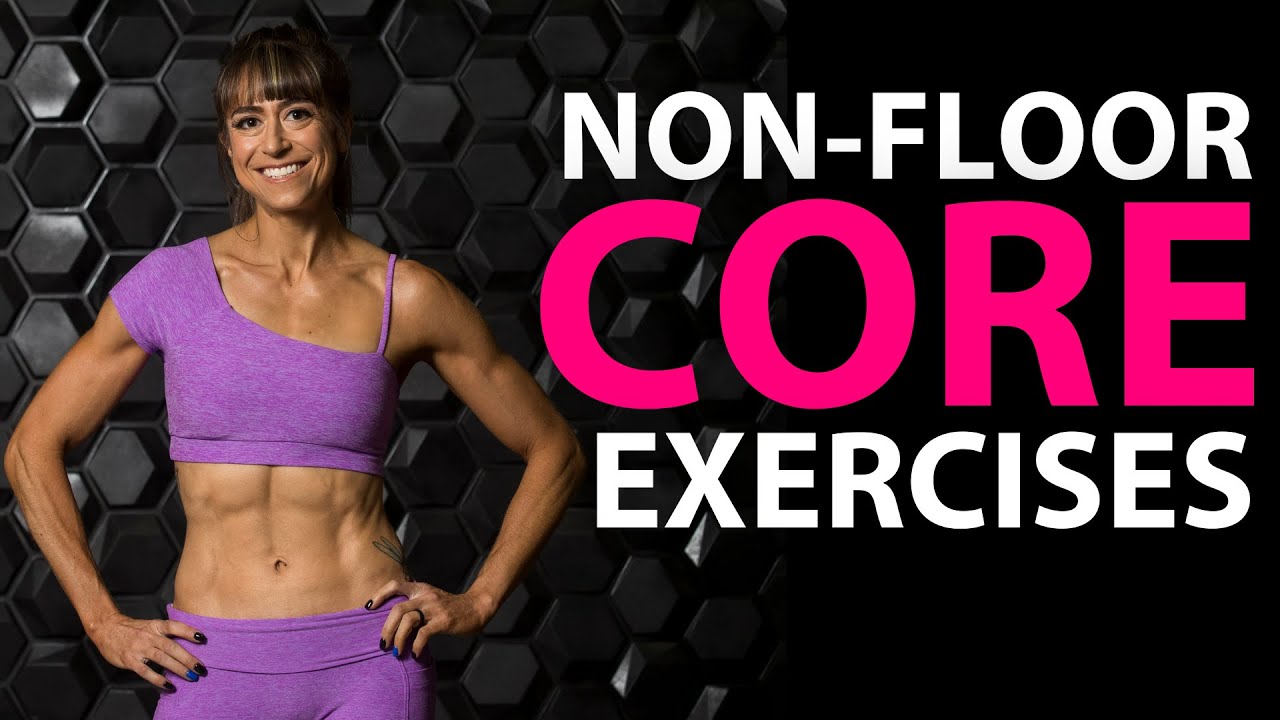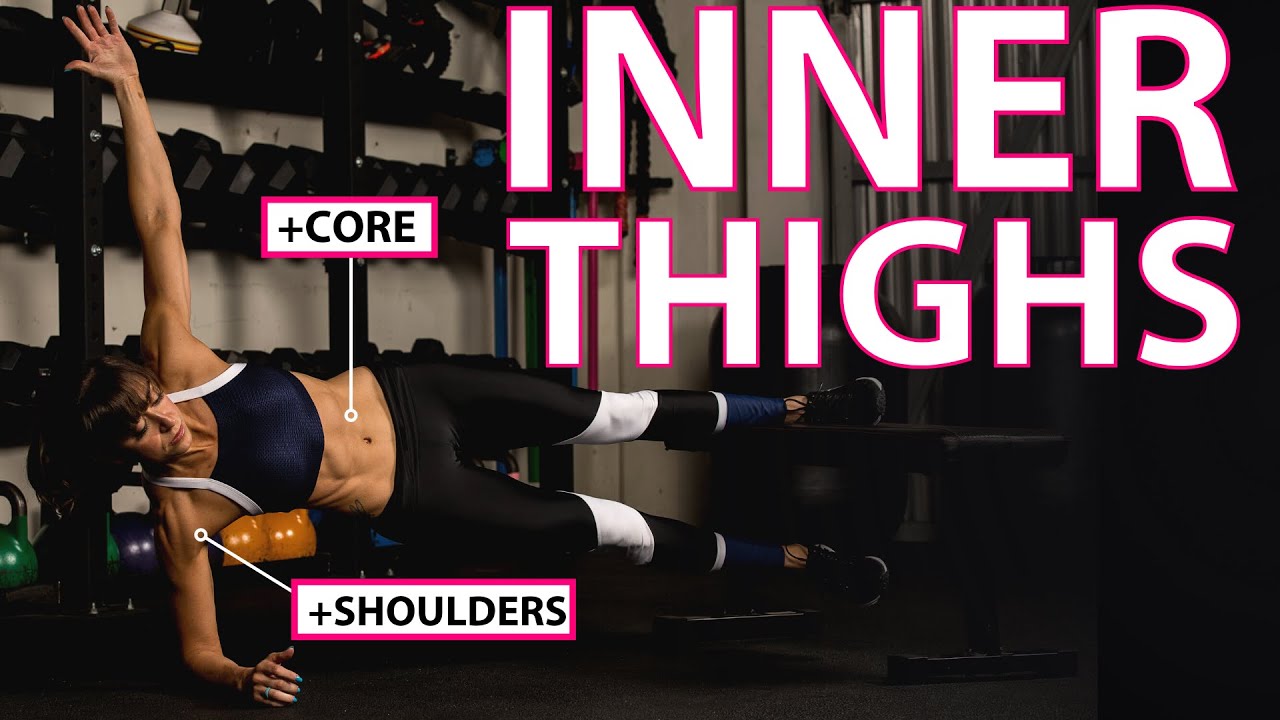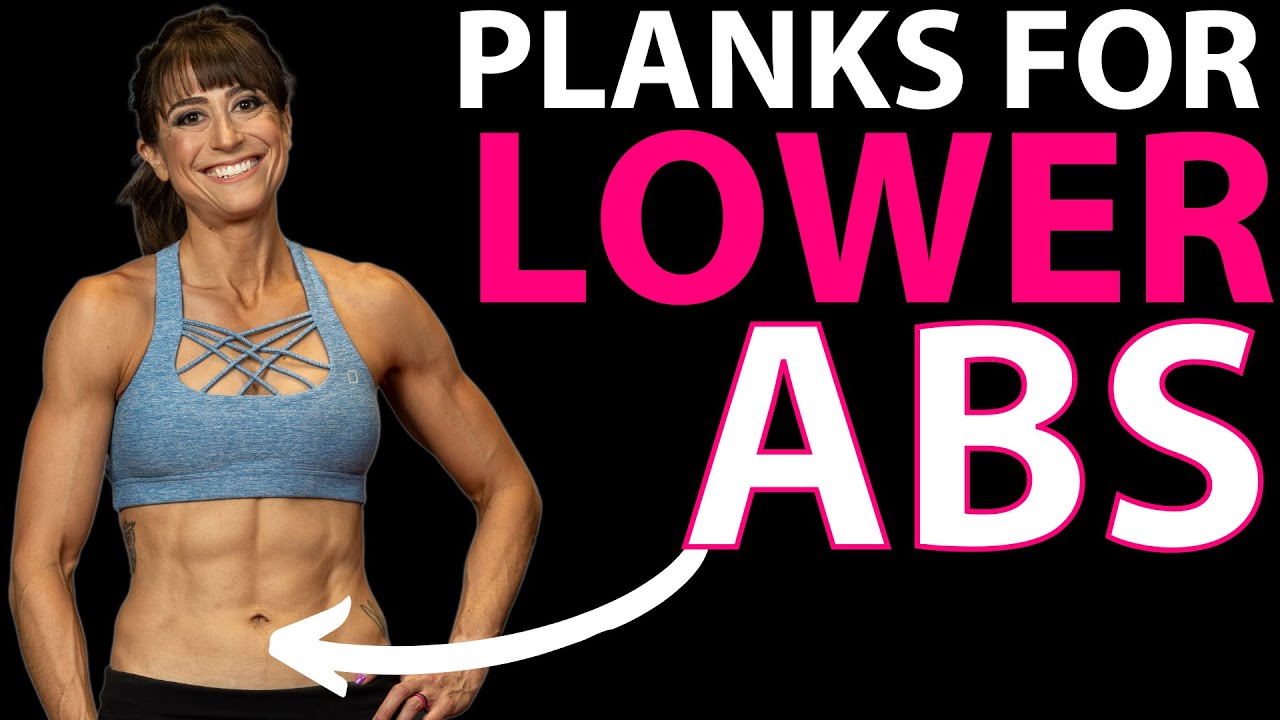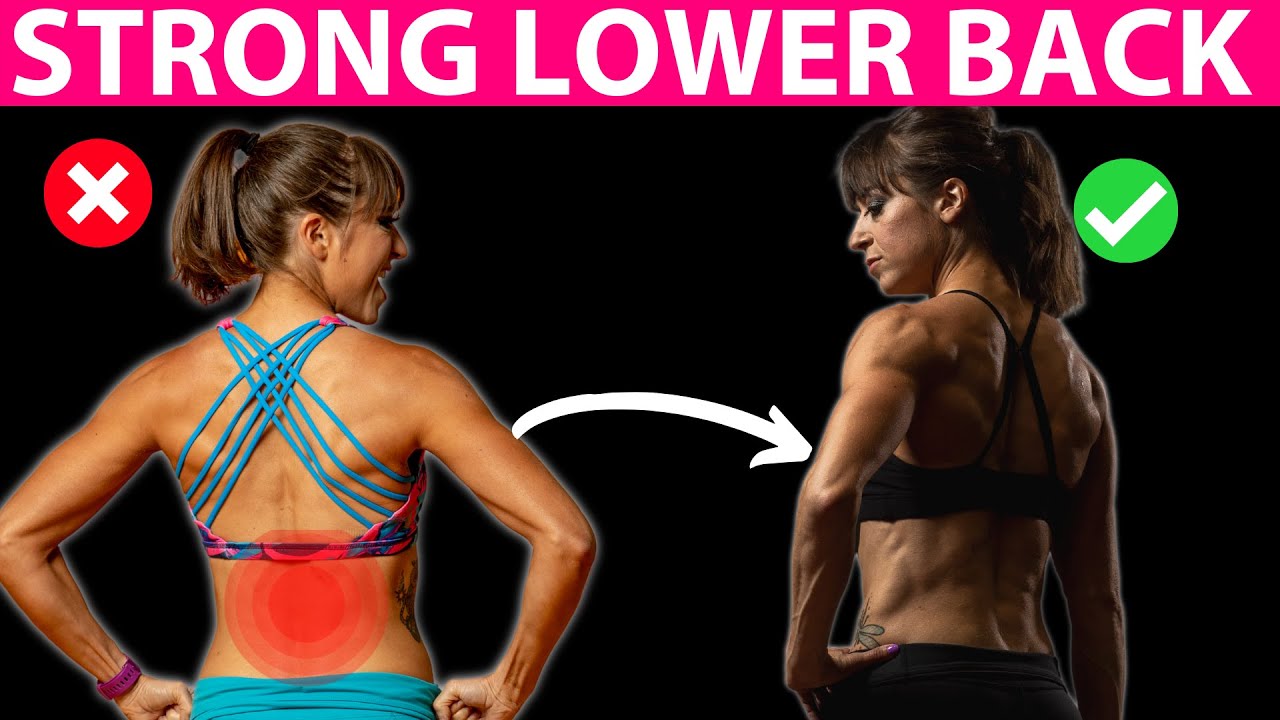
Can’t Get Down On The Ground? Try These Core Exercises!
Whether we want to simply mix things up, or it’s due to injury or health concerns, there are reasons why floor core work may not be right for us. But that doesn’t mean we don’t want to, or can’t, train hard and really challenge our core from all angles.
And actually there are a ton of core exercises that don’t require us to get down on the ground that are extremely beneficial even if we can do floor core work!
We can use non-floor core moves to work everything from our shoulders to our knees down our frontside and our backside.
We can literally work our entire core with a variety of tools and both rotational and anti-rotational moves.
And these 3 moves are a great way to work everything without getting down on the ground no matter your fitness level.
But first I do just want to mention the importance of that mind-body connection and being intentional with these moves.
If you just rush through these movements without focusing on what you feel working, you will not get the full benefit.
Focus on the push and pull of muscles. Focus on powering rotation and decelerating the movement. Focus on fighting rotation.
Really focus on what you feel working.
And if you feel your lower back taking over during any of these moves, do not be afraid to regress to progress.
Too often we just DO moves, we train harder, without focusing on what is actually working.
This is what perpetuates overload and injury. It’s what can make us super frustrated we aren’t seeing results while working really hard.
It’s because it’s not just enough to work hard and sweat and feel tired.
We do not want to waste effort!
So really focus on what you feel working and don’t get ego in advancing too quickly.
If you don’t feel your abs or obliques or glutes working, but instead your lower back, it’s time to step back or even change how you cue the move to yourself!
So what are the 3 amazing non-floor core moves to really target those abs, obliques, glutes, quads and even back?
3 Killer Core Moves You Don’t Need To Get Down On The Ground To Do….
#1: Rotational Swing
Standing core moves are a great option if you can’t get down on the ground. And you can do some amazing rotational exercises while standing to target those abs, obliques and even your glutes.
Rotational moves, like the rotational swing, are key to include because you aren’t just learning how to accelerate rotation but also DECELERATE and stop it.
It’s key we learn how to control rotation so that we avoid injury in everyday life and can prevent unwanted twisting through our spine.
The Rotational Swing is a great variation of that traditional hip hinge that targets the abs and obliques even more while still working the glutes and training that hip hinge movement pattern.
To do the Rotational Swing, you can use a Dumbbell or Kettlebell. Hold the weight in both hands while standing tall with your feet about hip-width apart.
Hinge at your hips to hike the weight back between your legs to start the swing.
Squeeze your glutes as you push the ground away and stand up tall, swinging the weight out in front of you.
Do not pull the weight forward with your arms. Use the glute drive to power the swing.
Then as the weight begins to lower back down, hinge at your hips, slightly pulling the weight outside one hip.
Rotate your torso slightly to allow the weight to swing outside one hip. Sit your butt back as you hinge over to swing the weight back. Make sure you do NOT round over as you hinge back.
After hinging over, swing the weight back and around front and then hinge over again as the weight swings back outside your other hip.
Make sure to squeeze your glutes and push the ground away each time you stand up to propel the weight up and over to the other side.
As you allow the weight to come back outside your hip, make sure to hinge over really sitting your butt back to load your glutes. Brace your abs to avoid twisting further than you need to just come outside your hip and do not let your spine round.
Move quickly with this swing starting light to make sure you can control the weight!
You may start with even a band version of this swing to help you learn to load those glutes and rotate to twist the weight outside your hips. This will apply resistance in a different way but require less control to decelerate the rotation.
#2: Bench V-Ups
Often when we can’t get down to the ground we feel stuck with only standing core moves. And while they are fabulous, we can still do lying and seated core work by using a bench!
So often we forget that we can use other tools to make it easy to lie down and even do seated exercises!
Not to mention using a bench can be a great way to progress and vary the range of motion we can work through to match our needs and goals.
Even if you can get down on the ground, the Bench V-Up is a killer core exercise that allows you to extend that range of motion you would use doing it off the ground.
This exercise is a great ab, hip and quad movement. Just make sure you slightly round your spine using the c-sit or creating a c curve so you aren’t just relying on your hip flexors.
While any ab exercise that uses hip flexion will engage those hip flexors, we want to make sure our abs are working to brace!
To do this move, sit on the front edge of your bench with your legs out straight in front of you and lean back to rest your hands on the bench behind you. You can place your hands over the back edge of the bench with your elbows bent to just slightly support and balance you.
As you lean back, slightly tuck your hips up toward your ribs and lift your heels just off the ground.
Then sit up forward as you lift your legs straight up toward the ceiling. You can use your hands to balance but try not to push off of them too much.
Think about pulling everything together with your abs, crunching your torso up as you lift your legs.
Then lean back and lower your legs so that your heels over just off the ground. Move at a controlled pace and focus on feeling those abs.
If you feel your lower back, you need to modify the movement.
The more you lean back and really use that extended range of motion, the harder this move will be.
To modify, you can do a single leg raise, even bending your knee or start by taking the lower body out of it completely to work on just that hinge back and the ab engagement to control that spinal flexion and c-sit movement!
#3: Anti-Rotational Overhead Press
One essential standing core move, that’s extremely popular, is the Pallof Press or stability press.
This is a great anti-rotational core move.
Anti-Rotational core work is so key so we have that stability and strength to avoid unwanted or unnecessary rotation during movement.
It helps us protect our spine and hips especially. But it can also help us improve our SHOULDER health.
And that’s why I love this overhead press variation of the stability press.
This move is a great way to target those obliques and abs while also working your glute medius, back and shoulders.
To do the Anti-Rotational Overhead Press, anchor a band to the side of you below your waist.
Walk away from the anchor point, holding the band in both hands up at the middle of your chest with your side to the anchor point. You want to feel the band trying to pull you to rotate toward the anchor point with your hands at your chest and feet about hip-width apart.
The wider your feet, the more support you’ll have so by narrowing your stance, you can make the move harder. But only do so if you can actually control the move and fight the rotation.
Engage your abs and obliques as well as upper back to unshrug your shoulders and press your chest out. Flex your quads and squeeze your glutes so you fight the urge to rotate.
Keeping everything engaged, slowly press up overhead without rotating. Then lower back down and repeat.
Move slowly to avoid rotating toward the anchor point as you extend your arms up overhead and bring them back down.
If you want to rotate toward that anchor point, go with a lighter band or move in slightly. You want tension in the band throughout the movement BUT can adjust how much it forces you to work by how far out you step.
You can also make the move harder by bringing your feet closer together for less of a base of support.
If you struggle with the proper thoracic extension to press overhead, you can also perform a chest press straight out instead!
SUMMARY:
Using these 3 moves you can really work your entire core using different planes of motion without getting down on the ground.
You can even combine these moves into a quick burner, performing 30 seconds of work per move or per side for a couple of rounds!
Want more amazing moves and workouts? Follow me on Instagram!
And shoot me a message to let me know what goals you’re working toward. I’d love to help!







